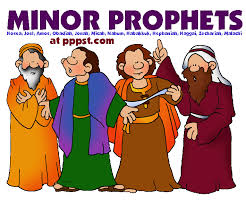Like it or not, if you read, you are an interpreter.
The context of the sentences and paragraphs guide the interpretation you make. For example, the word, “bolt.” What picture pops into your mind?
Left to itself, you might imagine at least 3 ideas. But used in the context of a sentence, the meaning is clear.
“The mechanic tightened the bolt.”
“The lightning bolt struck the plane.”
“The dog bolted out the door when it heard the bath water running.”
SIX CONSIDERATIONS CAN GUIDE OUR INTERPRETATION OF A BIBLICAL PASSAGE:
CONSIDERATION 1: YOUR PREUNDERSTANDINGS

Preunderstandings contain the ideas we may impose on the text before we study the text serious. We may be aware of some preunderstandings, but not others. Every encounter the reader experiences with the text adds to this preunderstanding: Sunday School lessons, sermons, Bible studies and a myriad of other possible experiences.
Admittedly, some experiences involved true understandings of the text, while others may not be true.
Kevin Vanhoozer warns about assuming our preunderstandings are always true as he calls it pride. This kind of pride “encourages us to think that we got the correct meaning before we have made the appropriate effort to recover it. Pride does not listen. It knows. Click to Tweet ”[i]
Preunderstandings often spring from theological agendas. Assuming that you know what the passage means because you have studied it in detail is dangerous. Familiarity may breed contempt for a passage already studied. Truths may be overlooked. Additional warnings need to be uttered in relationship to a culture that believes it knows what Jesus would do.
Preunderstandings stand at the cusp of changing every time a passage is examined. The goal is to improve one’s comprehension each time the text is studied.
CONSIDERATION 2: YOUR BASIC CONVICTIONS

Without question basic convictions remain important to the interpreter. Unlike preunderstandings, these beliefs will not change each time we read a passage. Basic convictions are not tied to one passage but are gleaned from the entire Bible. The student could list several of these non-negotiables which are connected to beliefs towards the Bible. J. Scott Duvall and J. Daniel Hays offer these for our consideration:
1.The Bible is the Word of God. Although God worked through people to produce it, it is nonetheless inspired by the Holy Spirit and is God’s Word to us.
2.The Bible is trustworthy and true.
3.God has entered into human history; thus, the supernatural (miracles, etc) does occur.
4.The Bible is not contradictory; it is unified, yet diverse. Nevertheless, God is bigger than we are, and he is not always east to comprehend. Thus, the Bible also has tension and mystery to it.[ii]
CONSIDERATION 3: YOUR AIM IN INTERPREATION

The aim of the interpreter rests on finding the intended meaning of the text. Gordon Fee and Douglas Stuart rightly state, “the most important ingredient the interpreter brings to the task is enlightened common sense. The test of good interpretation is that it makes good sense of the text. Correct interpretation, therefore, brings relief to the mind as well as a prick or prod to the heart.” [iii]
The interpreter needs to remember that discovering a “new” or “unique” meaning which no one else ever saw is not the goal of interpretation. This may border on pride where the interpreter attempts to find what all other interpreters throughout history failed to discover. Indeed, the interpretation may be unique to the one who sees or hears it for the first time, but it not an new and improved meaning.
CONSIDERATION 4: YOUR TRANSLATION

Have your read the preface to your favorite and trusted translation? Why not? Many readers fail to understand that their favorite Bible translation is, in reality, someone else’s interpretation of the original languages. The reader needs to understand the complexity of translations. There is no one word in the original language which can be translated in every context as the same word. Even the Greek word, kai, or “and” can mean, “and, also, indeed, and but” as well as many others, depending on the context.
“A Bible translation, or version, is a scholarly attempt to render the stories and thoughts of a people from ancient cultures who spoke ancient languages into a modern language that is spoken by people who live in very different, contemporary cultures.”[iv]
Have you asked yourself, “Is my translation a literal translation or is it a dynamic translation? That is, “Did my translators seek to stay as close to the literal word order of the Hebrew and Greek texts or did they seek to do an idea for idea translation?” James Moffatt, a Bible translator said, “A real translation is an interpretation.” [v]
CONSIDERATION 5: THE GENRE OF YOUR LITERATURE BEING STUDIED

The interpreter must be aware of the literary types found in the Bible based on formal and technical criteria apart from the author of the text, provenance, and subject matter. Texts are placed in categories based on literary conventions called, genre.
The Hebrew Old Testament major genres include historical narratives, poetry, prophecy, and wisdom literature. The Greek New Testament genres can be classified as gospel, epistle and apocalyptic. Each of these may include sub-categories. For example, narrative may touch upon parable, fable, short story, and saga.
CONSIDERATION 6: THE CIRCUMSTANCES OF THE PASSAGE

The interpreter should explore the historical context behind the passage. This differs from book to book. Research the time and culture of the author as well as his intended readers. What geographical, topographical, religious, economic, and political situation did the author and readers live? How might those areas touch upon the intended meaning of the author? The intended purpose should be sought as well, if possible to discover.
Related to the historical context is the literary context. The interpreter recognizes that words make sense in sentences. But more than that, they make sense in relationship to the sentences and paragraphs before and after them. “The most important contextual question you will ever ask – and it must be asked – is, “What is the point?” The goal is to trace the author’s train of thought.”[vi]
If the interpreter considers these six facets of interpretation with each text under study, he or she will be further down the road to a clearer understanding of that passage.

Can you add other considerations I did not mention? Leave a comment with your ideas and a once sentence summary of what you mean by your consideration.
[i] Kevin J. Vanhoozer, Jr. Is There a Meaning in This Text? The Bible, the Reader, and the Morality of Literary Knowledge (Grand Rapids: Zondervan, 1998), 462.
[ii] J. Scott Duvall and J. Daniel Hays, Grasping God’s Word, (Grand Rapids: Zondervan, 2012), 145.
[iii] Gordon D. Fee and Douglas Stuart, How to Read the Bible for All Its Worth, (Grand Rapdis: Zondervan, 2003), 18.
[iv] Michael J. Gorman. Elements of Biblical Exegesis, (Grand Rapids: Baker Academic, 2009), 40.
[v] Ibid., 35.
[vi] Fee, How to Read, 27.
















 questions. Your questions had to be asked with the expected answer of yes or no.
questions. Your questions had to be asked with the expected answer of yes or no.

